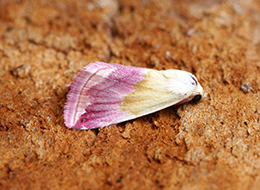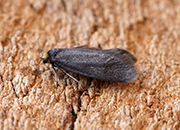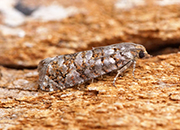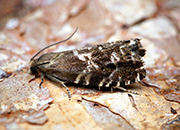Welcome
Hello and welcome to my moth Blog.
I now reside in a small village in East Cambridgeshire called Fordham.
My Blog's aim is to promote and encourage others to participate in the wonderful hobby that is Moth-trapping.
Moth records are vital for building a picture of our ecosystem around us, as they really are the bottom of the food chain. They are an excellent early indicator of how healthy a habitat is.
I openly encourage people to share their findings via social media platforms such as Facebook, Twitter & Instagram.
So why do we do it? well for some people it is to get an insight into the world of Moths, for others it is to build a list of species much like 'Twitching' in the Bird world.
The reason I do it....you just never know what you might find when you open up that trap!
I hope to show what different species inhabit Cambridgeshire and neighbouring counties.
On this Blog you will find up-to-date records and pictures.
I run a trap regularly in my garden and also enjoy doing field trips to various localities over several different counties.
Please also check out the links in the sidebar to the right for other people's Blogs and informative Websites.
Thanks for looking and happy Mothing!
KEY
NFY = New Species For The Year
NFG = New Species For The Garden
NEW! = New Species For My Records
Any Species highlighted in RED signifies a totally new species for my records.
If you have any questions or enquiries then please feel free to email me
Contact Email : bensale@rocketmail.com

 Musotima nitidalis
Musotima nitidalis
 L-album Wainscot
L-album Wainscot
 Feathered Ranunculus
Feathered Ranunculus
 Agonopterix nervosa
Agonopterix nervosa
 Blossom Underwing
Blossom Underwing
 Beautiful Marbled
Beautiful Marbled
 Lampronia fuscatella
Lampronia fuscatella
 Gravitarmata margarotana
Gravitarmata margarotana
 Perittia obscurepunctella
Perittia obscurepunctella Black-spotted Chestnut
Black-spotted Chestnut Cydia pactolana
Cydia pactolana



Nice one Ben, we have plum, cherry, apple and pear trees but I have never found a single caterpillar in our garden!?.
ReplyDeleteHave you retained it Ben? Usually easy to rear through and you will either get a nice spanking male, or a ridiculously fat and hairy wingless female which you can use to assemble a few males.
ReplyDeleteThanks guys.
ReplyDeleteWhats the easiest way to rear it?
and when is it likely to pupate? its quite a size already!
Cheers
Ben,
ReplyDeleteI have reared quite a few species in the past by simply putting the larvae in a clear plastic tupperware type box lined with paper kitchen towel. Provide plenty of fresh sprigs of foodplant, preferably from the plant that you found the larvae on but with a suitable alternative if necessary (I've reared many species in the past on cherry and lilac).
If rearing over a few days/weeks, then you'll need to clean out the box and refresh the foodplant regularly (ideally daily). The paper usually lasts a few days unless the foodplant or frass is damp. Keep the box indoors but not in direct sunlight.
If a larva sits still for a day or so without feeding, then it is probably changing instar - you may notice the head capsule come away first. Don't disturb them in this state.
I've not had to deal with parasitised larvae, but if they start to look obviously unwell/deformed then best to separate from any otherwise healthy larvae.
Before pupation, most species will wander around the box without feeding for a few hours and appear agitated. Some will also change colour (especially hawk-moth larvae), usually going darker. Most species will happily pupate in the paper lining, either by making a chamber or a silken cocoon. Don't disturb them at this stage - at least until you've reared a few and have a feel for what's happening as some species make a chamber but do not pupate immediately.
Vapourer will make an obvious cocoon - when I've reared them in the past they simply attach themselves to the side of the box or even the lid. It should pupate almost immediately by now, and will emerge in a couple of weeks or so - the normal flight period runs into October and they overwinter in the egg stage.
Remember that a female will simply clamber out of the cocoon and start emitting pheremones to attract males - put her and the cocoon in a net bag, or place a mash/net over the top of the open box and wait for males with your net ready. After letting her mate, she will soon start laying eggs and then eventually drop off dead - what a life! Place and secure the cocoon in a suitably sheltered crevice or ledge on a fence, side of the shed or tree trunk. I reckon if you have a good look around your garden you will find one or two old cocoons covered in empty egg shells.
Good luck!
Thanks, thats alot of help Skev, he's still eating the Apple leaves :D
ReplyDelete